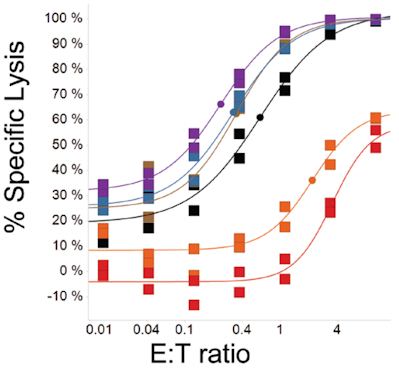
Luciferase Reporter Cell Line Application: New Drug/Treatment Discovery
Luciferase reporter cell lines are widely used in drug discovery. Luciferase is a generic term for a class of enzymes that catalyze the oxidation and luminescence of luciferin or fatty aldehydes in organisms. It comes from naturally luminescent organisms. The application of luciferase in biological research is mainly through molecular biological cloning techniques, which insert luciferase gene into the chromosomes of the expected analyzed cell line, and by antibiotic screening, a luciferase labeled cell line is generated.
Its luminescence mechanism is that luciferase and luciferin substrate consume ATP to undergo an oxidation reaction in the presence of oxygen and Mg2+, converting part of chemical energy into light energy to release. Due to the absence of interference from excitation, the signal to noise ratio is high and its tissue penetration ability is significantly stronger than that of green fluorescent protein (GFP).

In 1986, researchers used the firefly luciferase gene as a reporter gene for determining gene expression. Due to its convenience, high sensitivity, and high success rate, the luciferase gene has been widely used as a reporter gene, and has had an important impact on many scientific research fields, including promoter activity research, transcription factor research, mammalian two-hybrid assay, and in vivo luciferase cell imaging, etc. The following are three common in vitro applications of luciferase reporter cell line in drug/therapeutic research:
1. Lead compound screening
The luciferase reporter gene has the characteristics of high sensitivity and high throughput. Screening of lead compounds by luciferase cell lines help for small organic compounds to replace biological macromolecules as drugs.
2. Drug efficacy evaluation
In drug research and development, after completing compound screening and optimization , it is necessary to conduct a series of developability assessments, including binding activity, conformational stability, and functional activity, etc. And then moving forward to animal tests to complete preclinical safety and effectiveness assessments, and finally entering the clinical experiments. Due to the differences between in vitro and in vivo experiments, it is necessary to conduct accurate high throughput screening during the in vitro experiment phase to define as many candidate compounds as possible. At this time, the sensitivity and detection window of reporter gene cell lines are particularly important. Low sensitivity and too small detection window may lead to missing some potential candidate compounds.
The luciferase reporter gene system is recommended as the reporter cell line, which is highly sensitive and suitable for high-throughput screening. The luciferase activity of all luciferase labeled cell lines in Vitro Biotech have undergone QC testing, ensuring the cell lines can be used for testing different drug efficacy.
3. Cell therapy discovery
In addition to being used in efficacy evaluation, luciferase stable cell lines can also be used in the research and development of some cell therapies. For example, in the study of CAR-T targeting BCMA published by Novartis in 2018, the luciferase system was used. The researchers introduced the firefly luciferase (Luc) gene into human multiple myeloma cell line (KMS-11) to construct KMS-11-luc stable cell line, and then incubated CAR-T cells and KMS-11-luc cells at different efficiency target ratios (E: T ratios) for 20 hours. The luminescence intensity of the cell mixture was measured, which can represent the remaining number of target cells.

Therefore, to obtain a stable cell line that can efficiently express luciferase is important for new therapy discovery. Through lentivirus transduction and antibiotics screening, an ideal luciferase overexpression cell line can be obtained. However, the time and labor costs involved in this process are huge, so you can select an in-stock luciferase cell line at Vitro Biotech. We have ten years of experience in the stable cell line generation, and we have 133 Luciferase cell lines in our product list.
If your preferred luciferase cell line is not on the list, please contact us to get a quote for the stable cell line customization service. A luciferase labeled cell line can be obtained as soon as 6 weeks.

